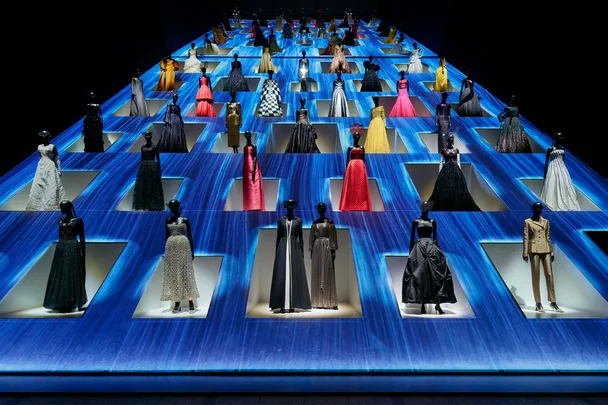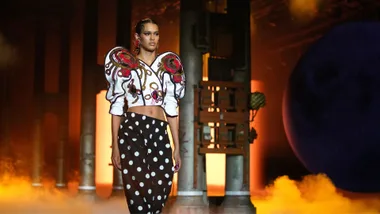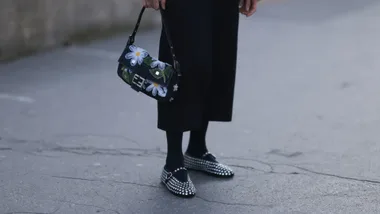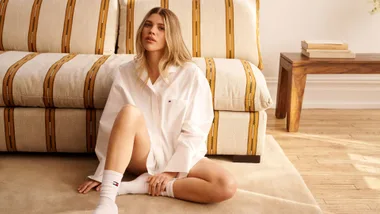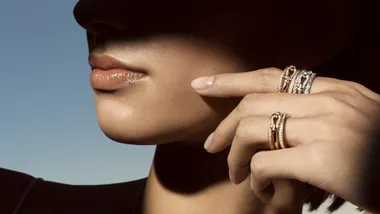If you’re searching for pure fashion fantasy this festive season, a new exhibition at the Museum of Contemporary Art in Tokyo will take you on a magical tour of Christian Dior’s iconic creations while exploring his special relationship with Japan.
Here, Florence Muller, curator of the current “Christian Dior: Designer of Dreams” exhibition, chats to Editor Nicky Briger about Dior’s enduring appeal and why this is one of her favourites to date.
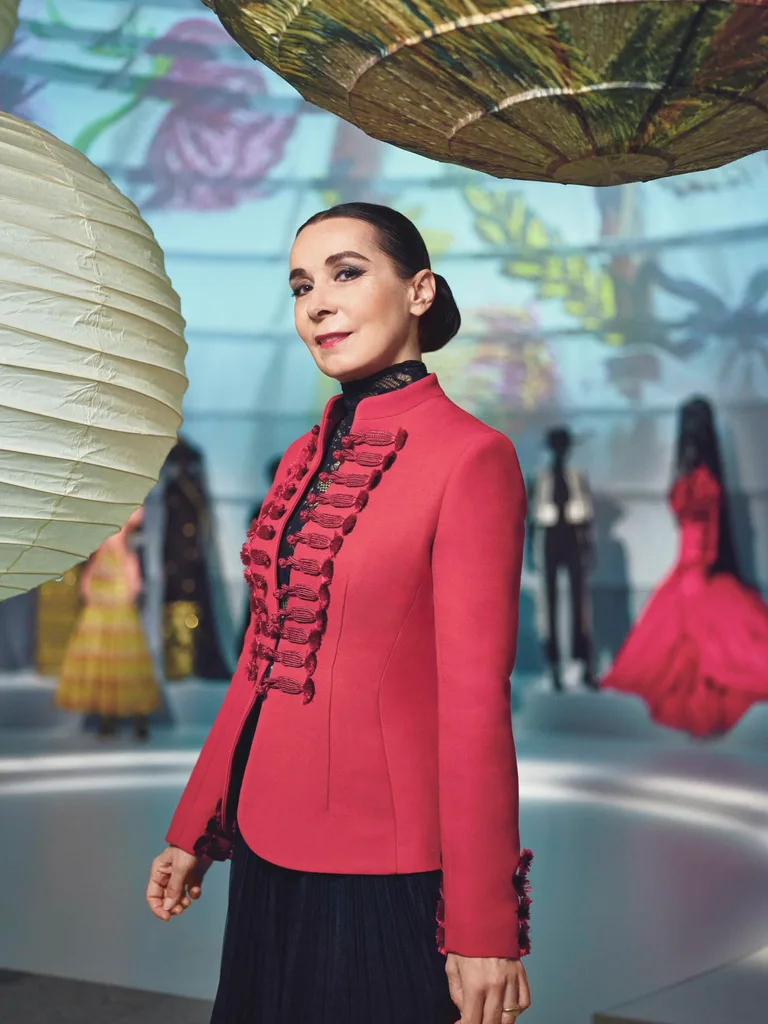
Marie Claire: Congratulations! With 13 rooms, 350 dresses and 2000 square metres, this is the ultimate ode to Christian Dior. It really is where fashion meets art. How does the process work to produce something of this magnitude?
Florence Müller: Thank you! Dior has the latest fashion archive in the world; it’s massive as they’ve been collecting for years and continue to find and buy back new pieces to add to their archives. They keep everything meticulously; it’s very impressive. All the couture pieces, documents, photos, sketches, accessories and videos—it’s a goldmine for someone like me.
Everything is kept in a giant archive storage facility, which is like fashion Christmas. The process starts with myself and the Dior team entering the facility and taking all the dresses out of their boxes—literally thousands of them. We start collecting and collating them appropriately for the exhibition theme, and then do mock-ups in life size in the storage facility so we can reduce the list and edit accordingly.
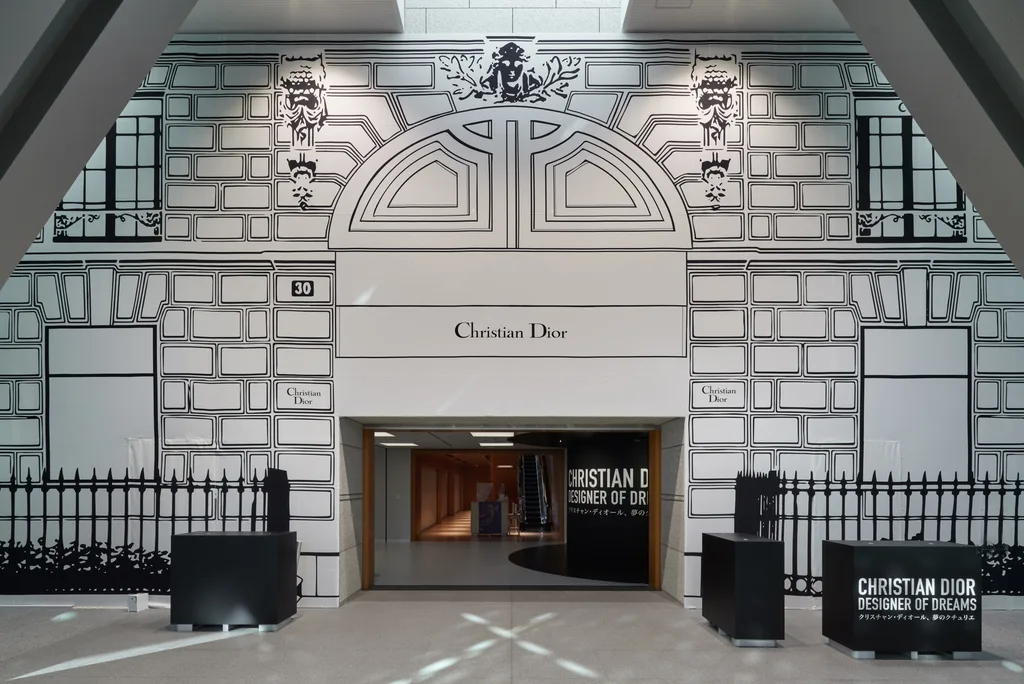
MC: It must take a lot of time to painstakingly sort through so much fashion.
FM: Yes, up to a year. Each time we have a new project, I have to look at their new acquisitions and try to integrate them in the exhibition. You also change things because some dresses can become very fragile. Others can exhibit for a long time, but some need to be removed, taken back to France and repaired. But each time you walk into the facility, it’s like a party! Thousands and thousands of beautiful dresses. Can you imagine?
MC: I actually can’t! I hear you came up with the concept and name of ‘Designer of Dreams’?
FM: I did. The Christian Dior: Designer of Dreams retrospective was created in 2017 to celebrate the 70th anniversary of the House of Dior. To mark this event in the history of haute couture and the fashion capital of Paris, the Musée des Arts Décoratifs dedicated all their exhibition spaces to it: almost 3000 square metres! I came up with the title “Designer of Dreams” because Christian Dior used that term often. He even called his office “the office of dream”. It was a word he used constantly because after World War II he wanted to bring back a time of dreams and happiness after people had suffered so much.

MC: Since then, the exhibition has toured the world, including New York and London. Why did you decide to exhibit in Japan?
FM: The exhibition was rethought specially for the MOT in Tokyo as a homage to the deep ties uniting Christian Dior and Japan. As a child, he felt his first artistic emotions contemplating the fresco painted in Utamaro style on the ceiling of his family’s villa in Normandy on the French coast. Childhood memories are powerful and have the capacity to impact an entire life.
In his first apartment on the Rue Royale in Paris, he decorated his living room in fabric of Japanese influence. Once a couturier, he dreamed of going to Japan to discover the sources of art and culture of this country he admired so much, for both its ancient traditions and capacity for reinvention in modernity. Passing away at a relatively young age, Christian Dior didn’t make it to Japan in person but his dresses, models and collaborators would go there on many occasions. The leading names of Japanese fashion,
personalities, actresses and Japanese delegations would then be received in the salons of Avenue Montaigne, leading to voyages of the most fruitful the Crown Prince’s marriage to Princess Michiko in 1959 for which, after the religious ceremony in traditional kimono, the bride chose to wear three Dior dresses successively. The links of the Maison with Japan form the backbone of the exhibition at the MOT of Tokyo.
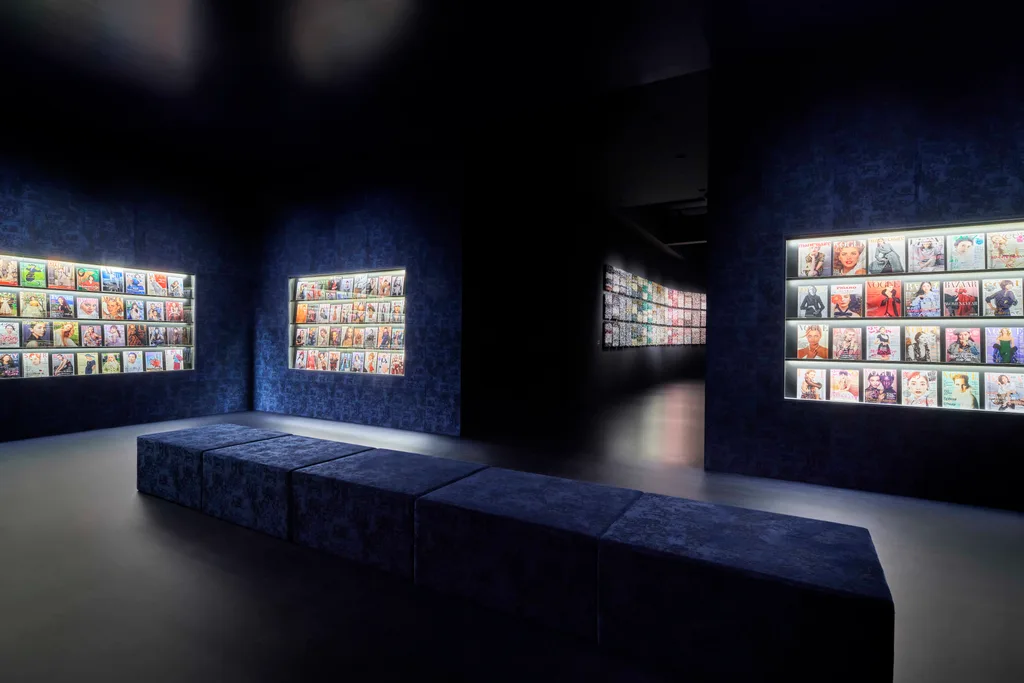
MC: Christian Dior was the first Western designer to have such an influence in Japan; why do you think this was the case?
Like France, Japan was destroyed by the war and needed optimism and belief in a better future to rebuild itself. With its style, Dior brought a triumphant femininity, a return to happiness and joie de vivre. In 1946, while the House was being founded, people were still living in misery, without a roof and with ration books; Dior style taught them that a gracious allure helps them feel proud and confident in the future. The Japanese have been heralded for their elegance and sophistication since ancient times, and undoubtedly perceived how the creative vision of Dior—a symbol of joy and happiness—could relaunch the taste for ornamentation while giving a new impetus to Japanese fashion.
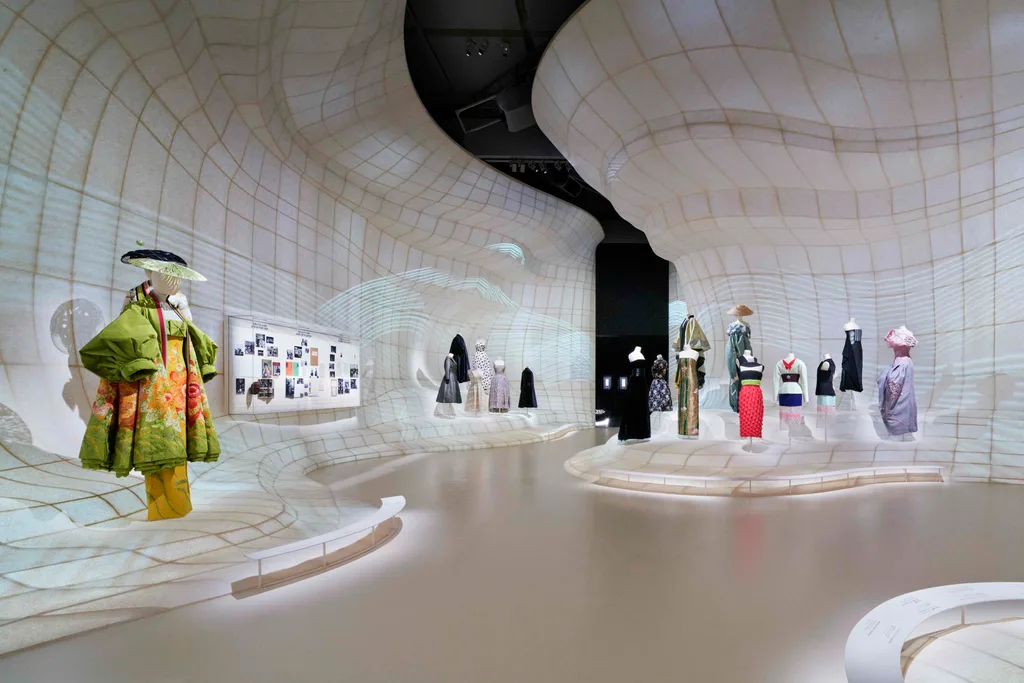
MC: How did you select the objects, works of art and paintings displayed in relation to the Dior creations?
FM: With the help of teams from Maison Dior, I explored all their archives before selecting models, accessories, photographs and documents that best communicated the exhibition’s dozen themes, while renewing the assortment already used for the previous Christian Dior: Designer of Dreams exhibitions. The result of this selection is that many unprecedented silhouettes and documents will feature at the MOT alongside famous iconic pieces. Visitors will also discover an array of art works belonging to the MOT that illustrate the inspirations of the House’s artistic directors through the history of art.
Visitors will be able to admire the paintings of 20th century Japanese artists and Western works of art—notably those of Andy Warhol—chosen from the collections of the museum. Lastly, a series of documents, textiles, photographs, drawings, patterns and objects are on loan exceptionally from the archives of the Kanebo, Daimaru and Tatsumura houses, who all worked with the House of Dior back in the 1950s. These elements, exhibited for the first time, will reveal unknown aspects of the collaborative history between Dior and these Japanese companies.
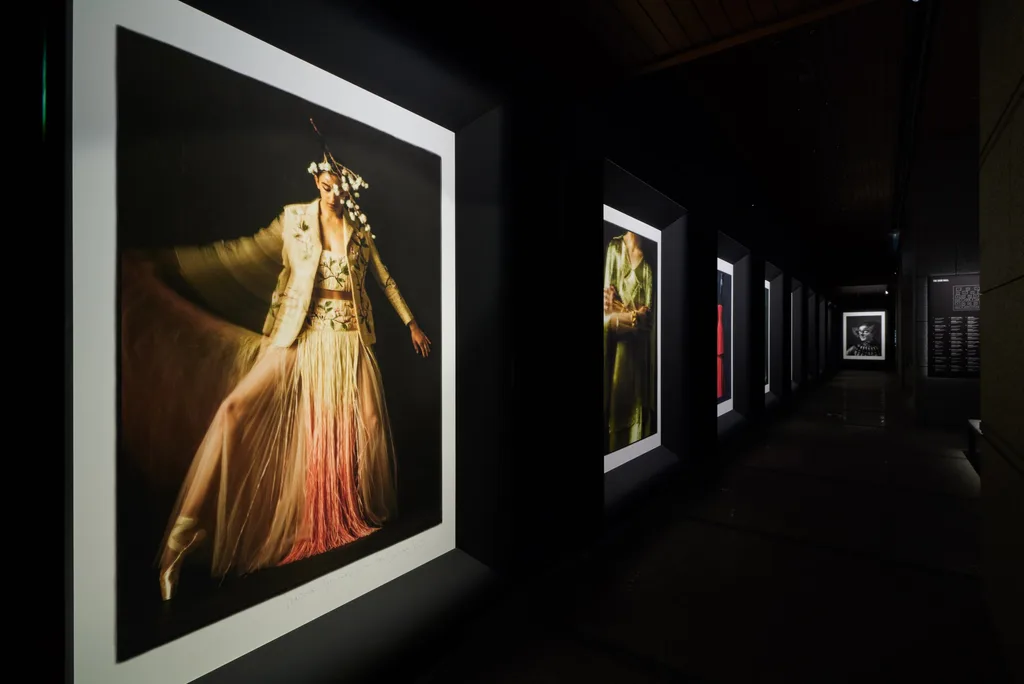
MC: How does this retrospective illustrate the strong ties uniting Dior and Japan?
FM: An entire room is dedicated to this theme which follows on from the first room introducing the New Look. So from the very beginning, the concept is developed with a lineup of haute couture pieces, display cases and a documentary film showing the Dior-Japan relationship. This theme reappears during the exhibition, either through the works exhibited or in the style of Shohei Shigematsu’s scenography. That first room is one of my favourites in the exhibition as it really sets the tone and took so much time to put together.
I’ve always been passionate about Japanese art and culture; I was lucky enough to enjoy several trips to Japan, starting in 1985, while I was still a young curator at the Musée des Arts de la Mode. Each trip reinforced my admiration for Japan and I always look forward to going back. Without a doubt, it’s the country that’s impacted me the most in my comprehension of art, culture and the contemporary world. Discovering Japan is a must!

MC: What’s your other favourite room in the exhibition?
FM: The Dior garden. This room is a collaboration with Japanese artist Ayumi Shibata who has painstakingly cut by hand a room full of lace-like paperwork pieces. I honestly don’t understand how she does it; she’s a magician. It was my decision to get her in and we’re all thrilled with the results. I’m also obsessed with the photography by Yuriko Takagi which adorned every wall, and the architecture by Shohei Shigematsu. It’s a true cultural collaboration.
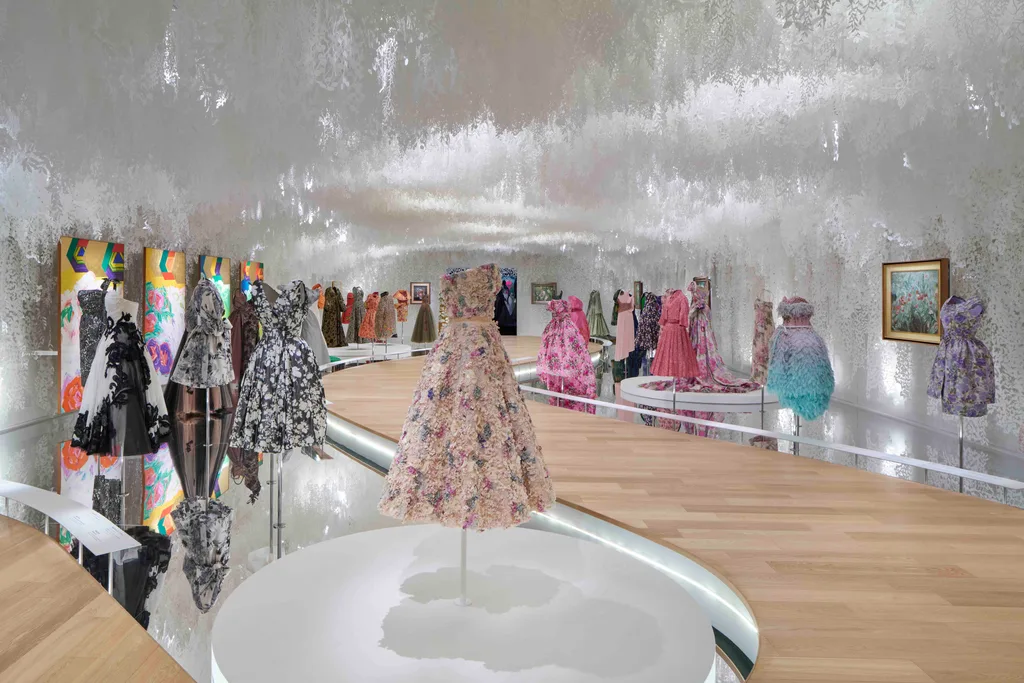
MC: Why is a Dior exhibition always a unique experience?
Because visitors discover how the House of Dior has come together thanks to a long line of designers, all loyal to the spirit of Christian Dior. People understand that Dior isn’t simply an ephemeral fashion story, but a real reflection of the evolution of the world. Since the New Look took the world by storm, Dior has been positioned at the helm of fashion.
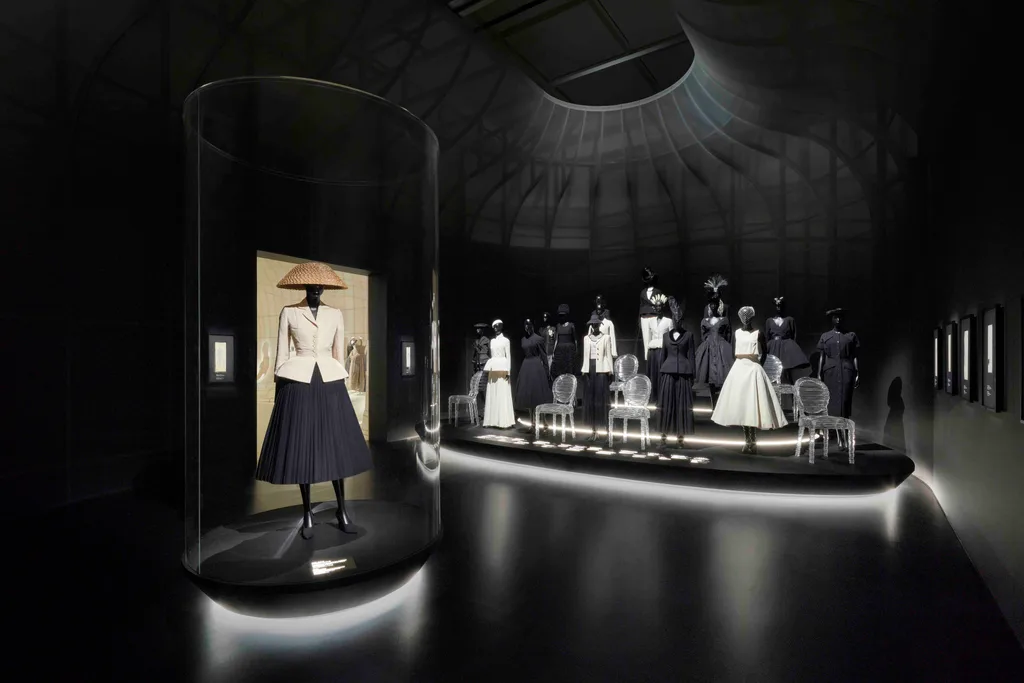
MC: How does it provide an opportunity to forge cultural links, open up to the world, while also reinventing the Dior dream and rediscovering an exceptional heritage?
The exhibition provides that rare opportunity to show how fashion is a form of art. How we dress reveals who we are and how we live. The House of Dior has mirrored the world ever since Christian Dior dared to rethink fashion in a post-war era. He had the courage to believe in a better world and to communicate this in a vision that inspired millions of women.
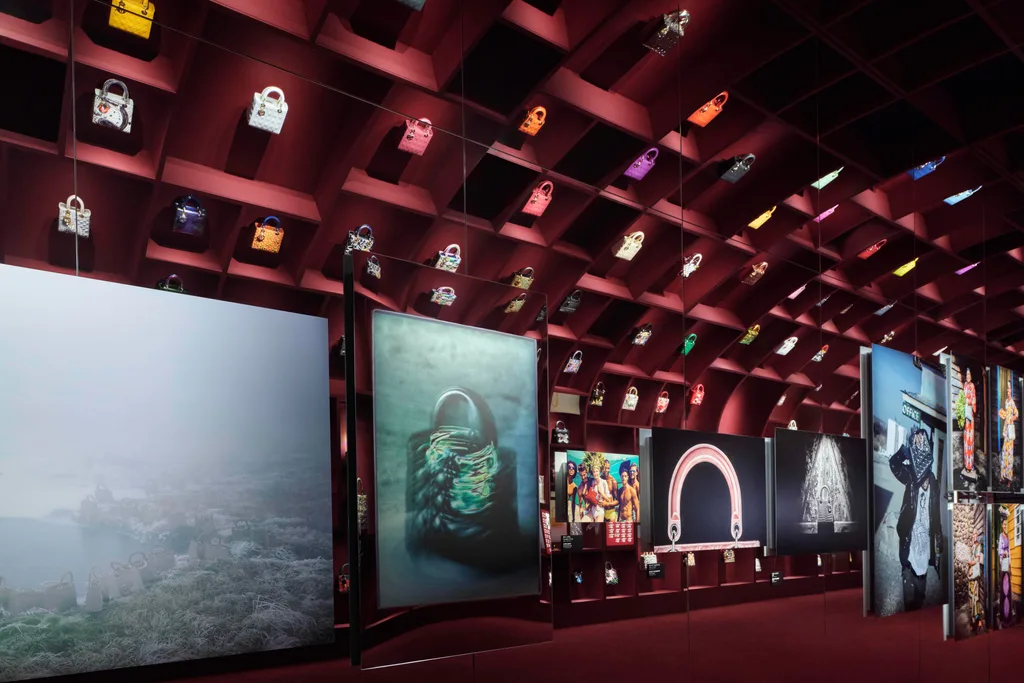
MC: How would you define Dior style?
FM: Dior enhances the female body via the cut, fabric and embellishments of the garment and accessories. It’s a style that leaves nothing to chance and envisages all aspects of beauty, whether they be allure, movement or harmony between parts of the body, face, bust, arms, legs… as if it were a total art, from the clothes to the accessories, perfume and make-up. Hats, jewellery, dresses, bags and shoes add equally to the allure, elegance and harmony of Dior. Perfume, as Monsieur Dior said, is “the finishing touch”.
Why does Dior have such a rich archive?
FM: Christian Dior wanted to be a gallerist, and I think this obsession with archiving started because of this. This whole exhibition, with the help of the architect, is a work of art. Between the photography, architecture and fashion, it all fuses together to breathe as one.

MC: Do you have a favourite Dior creative director, or is that too difficult to answer?
FM: All the creative directors—from Christian Dior and Yves Saint Laurent to Marc Bohan, John Galliano and Raf Simmons—bring something new and innovative to the House. But I love Maria Grazia Chiuri because I’m a woman and I just adore her clothes—it’s where feminism meets femininity. It’s light and fabulous to wear. She translates the strength and revival of feminism throughout the world in her creations. She dedicates her collections successively to the leading figures of art and culture who have worked to increase the importance of women’s empowerment.

MC: Lastly, tell us something we mightn’t know about the House of Dior?
FM: In 1947, when Christian Dior created the New Look, people protested in the streets because of the excess use of fabric, which was seen as gauche in a lean, post-war world. But this idea of luxury really started to capture people’s imaginations.
In truth, there wasn’t much luxurious fabric around, so these original pieces are actually made with common silk and wool. But what was brilliant about Christian Dior was that he used a lot of common fabric to create the shape and beautiful construction, so people thought these pieces were super luxurious, whereas in reality they weren’t. He had to create the illusion of luxury. His exceptional skills created a miracle with the fabric he had, hence why he’s the “designer of dreams”.
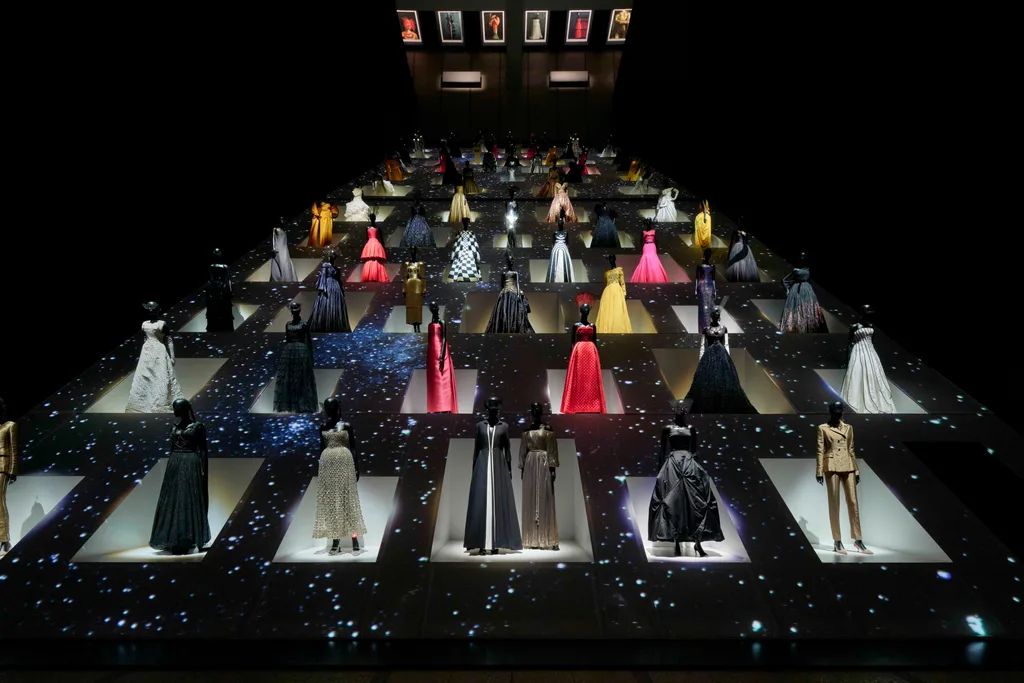
‘Christian Dior: Designer Of Dreams’ will be exhibiting at the Museum of Contemporary Art Tokyo from December 21, 2022 until 28 May 28, 2023.
